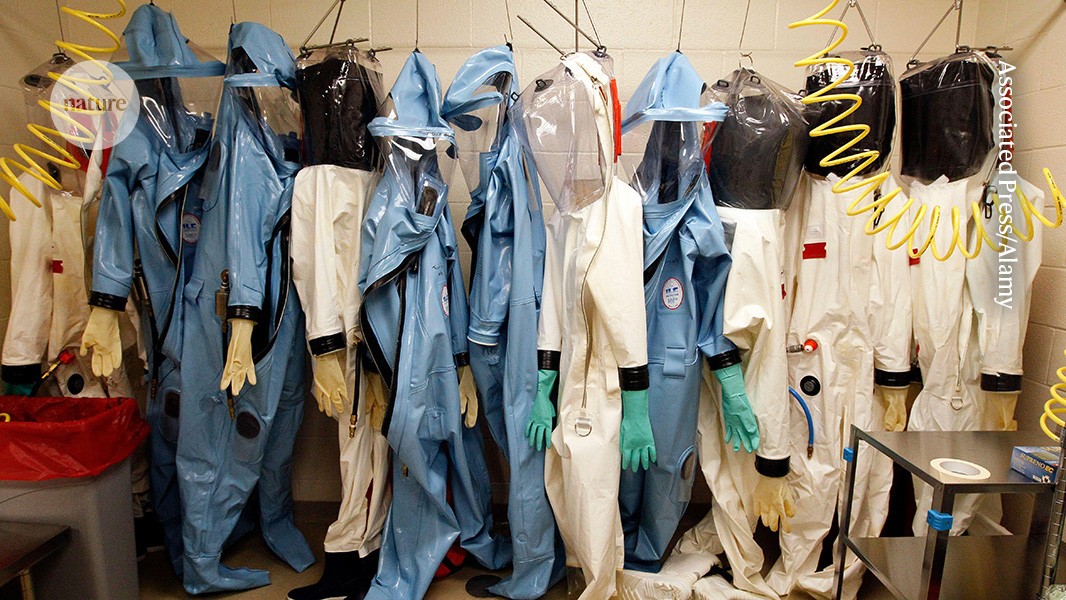Radeloff, V. C. et al. The wildland–urban interface in the United States. Ecol. Appl. 15, 799–805 (2005).
Bento-Gonçalves, A. & Vieira, A. Wildfires in the wildland–urban interface: key concepts and evaluation methodologies. Sci. Total Environ. 707, 135592 (2020).
Bar-Massada, A., Radeloff, V. C. & Stewart, S. I. Biotic and abiotic effects of human settlements in the wildland–urban interface. BioScience 64, 429–437 (2014).
Pesaresi, M. & Politis, P. GHS Built-up Surface Grid, Derived From Sentinel2 and Landsat, Multitemporal (1975–2030) (European Commission, Joint Research Center, 2022).
Zanaga, D. et al. ESA WorldCover 10 m 2020 v100. Zenodo https://zenodo.org/record/5571936 (2021).
Ellis, T. M., Bowman, D. M. J. S., Jain, P., Flannigan, M. D. & Williamson, G. J. Global increase in wildfire risk due to climate-driven declines in fuel moisture. Global Change Biol. 28, 1544–1559 (2021).
Crutzen, P. J. Geology of mankind. Nature 415, 23 (2002).
Steffen, W., Crutzen, P. J. & McNeill, J. R. The Anthropocene: are humans now overwhelming the great forces of nature. AMBIO 36, 614–621 (2007).
Song, X.-P. et al. Global land change from 1982 to 2016. Nature 560, 639–643 (2018).
Winkler, K., Fuchs, R., Rounsevell, M. & Herold, M. Global land use changes are four times greater than previously estimated. Nat. Commun. 12, 2501 (2021).
Potapov, P. et al. Global maps of cropland extent and change show accelerated cropland expansion in the twenty-first century. Nat. Food 3, 19–28 (2022).
Melchiorri, M. et al. Unveiling 25 years of planetary urbanization with remote sensing: perspectives from the global human settlement layer. Remote Sens. 10, 768 (2018).
Elhacham, E., Ben-Uri, L., Grozovski, J., Bar-On, Y. M. & Milo, R. Global human-made mass exceeds all living biomass. Nature 588, 442–444 (2020).
Wiedenhofer, D. et al. Prospects for a saturation of humanity’s resource use? An analysis of material stocks and flows in nine world regions from 1900 to 2035. Global Environ. Change https://doi.org/10.1016/j.gloenvcha.2021.102410 (2021).
Seto, K. et al. Urban land teleconnections and sustainability. Proc. Natl Acad. Sci. USA 109, 7687–7692 (2012).
Liu, J. et al. Framing sustainability in a telecoupled world. Ecol. Soc. https://doi.org/10.5751/ES-05873-180226 (2013).
Cohen, J. D. Preventing disaster—home ignitability in the wildland–urban interface. J. For. 98, 15–21 (2000).
Ganteaume, A., Barbero, R., Jappiot, M. & Maillé, E. Understanding future changes to fires in southern Europe and their impacts on the wildland–urban interface. J. Saf. Sci. Resil. 2, 20–29 (2021).
Radeloff, V. C. et al. Rapid growth of the US wildland–urban interface raises wildfire risk. Proc. Natl Acad. Sci. USA 115, 3314–3319 (2018).
Modugno, S., Balzter, H., Cole, B. & Borrelli, P. Mapping regional patterns of large forest fires in Wildland–Urban Interface areas in Europe. J. Environ. Manag. 172, 112–126 (2016).
Kaim, D., Radeloff, V. C., Szwagrzyk, M., Dobosz, M. & Ostafin, K. Long-term changes of the wildland–urban interface in the Polish Carpathians. ISPRS Int. J. Geo-Inf. 7, 137 (2018).
Li, S., Dao, V., Kumar, M., Nguyen, P. & Banerjee, T. Mapping the wildland–urban interface in California using remote sensing data. Sci. Rep. 12, 5789 (2022).
Argañaraz, J. P. et al. Assessing wildfire exposure in the Wildland–Urban Interface area of the mountains of central Argentina. J. Environ. Manag. 196, 499–510 (2017).
Sarricolea, P. et al. Recent wildfires in Central Chile: detecting links between burned areas and population exposure in the wildland urban interface. Sci. Total Environ. 706, 135894 (2020).
Vilà-Vilardell, L. et al. Climate change effects on wildfire hazards in the wildland–urban-interface—Blue pine forests of Bhutan. For. Ecol. Manag. 461, 117927 (2020).
Christ, S., Schwarz, N. & Sliuzas, R. Wildland urban interface of the City of Cape Town 1990–2019. Geogr. Res. 60, 395–413 (2022).
Bar-Massada, A., Radeloff, V. C., Stewart, S. I. & Hawbaker, T. J. Wildfire risk in the wildland–urban interface: a simulation study in northwestern Wisconsin. For. Ecol. Manag. 258, 1990–1999 (2009).
Kramer, H. A., Mockrin, M. H., Alexandre, P. M. & Radeloff, V. C. High wildfire damage in interface communities in California. Int. J. Wildl. Fire 28, 641 (2019).
Mietkiewicz, N. et al. In the line of fire: consequences of human-ignited wildfires to homes in the U.S. (1992–2015). Fire 3, 50 (2020).
Gavier-Pizarro, G. I., Radeloff, V. C., Stewart, S. I., Huebner, C. D. & Keuler, N. S. Housing is positively associated with invasive exotic plant species richness in New England, USA. Ecol. Appl. 20, 1913–1925 (2010).
Larsen, A. E., MacDonald, A. J. & Plantinga, A. J. Lyme disease risk influences human settlement in the wildland–urban interface: evidence from a longitudinal analysis of counties in the northeastern United States. Am. J. Trop. Med. Hyg. 91, 747–755 (2014).
Seto, K. C., Güneralp, B. & Hutyra, L. R. Global forecasts of urban expansion to 2030 and direct impacts on biodiversity and carbon pools. Proc. Natl Acad. Sci. USA 109, 16083–16088 (2012).
Jenerette, G. D. et al. An expanded framework for wildland–urban interfaces and their management. Front. Ecol. Environ. 20, 516–523 (2022).
Schoennagel, T. et al. Adapt to more wildfire in western North American forests as climate changes. Proc. Natl Acad. Sci. USA 114, 4582–4590 (2017).
Liu, Z., Wimberly, M. C., Lamsal, A., Sohl, T. L. & Hawbaker, T. J. Climate change and wildfire risk in an expanding wildland–urban interface: a case study from the Colorado Front Range Corridor. Landsc. Ecol. 30, 1943–1957 (2015).
Olson, D. M. et al. Terrestrial ecoregions of the world. A new map of life on Earth. BioScience 51, 933 (2001).
Liu, X. et al. High-resolution multi-temporal mapping of global urban land using Landsat images based on the Google Earth Engine Platform. Remote Sens. Environ. 209, 227–239 (2018).
Syphard, A. D., Clarke, K. C. & Franklin, J. Simulating fire frequency and urban growth in southern California coastal shrublands, USA. Landsc. Ecol. 22, 431–445 (2007).
Chen, B. et al. Climate, fuel, and land use shaped the spatial pattern of wildfire in California’s Sierra Nevada. J. Geophys. Res. https://doi.org/10.1029/2020JG005786 (2021).
Hu, Q. et al. Global cropland intensification surpassed expansion between 2000 and 2010: a spatio-temporal analysis based on GlobeLand30. Sci. Total Environ. 746, 141035 (2020).
Dijkstra, L. et al. Applying the degree of urbanisation to the globe: a new harmonised definition reveals a different picture of global urbanization. J. Urban Econ. 125, 103312 (2021).
Pausas, J. G. & Keeley, J. E. Wildfires and global change. Front. Ecol. Environ. 19, 387–395 (2021).
Calkin, D. E., Cohen, J. D., Finney, M. A. & Thompson, M. P. How risk management can prevent future wildfire disasters in the wildland-urban interface. Proc. Natl Acad. Sci. USA 111, 746–751 (2014).
Knorr, W., Arneth, A. & Jiang, L. Demographic controls of future global fire risk. Nat. Clim. Change 6, 781–785 (2016).
Bowman, D. M. J. S. et al. Vegetation fires in the Anthropocene. Nat. Rev. Earth Environ. 1, 500–515 (2020).
Jolly, W. M. et al. Climate-induced variations in global wildfire danger from 1979 to 2013. Nat. Commun. 6, 7537 (2015).
Barros, C., Thuiller, W. & Münkemüller, T. Drought effects on the stability of forest-grassland ecotones under gradual climate change. PLoS ONE 13, e0206138 (2018).
Bowman, D. M. J. S. et al. The human dimension of fire regimes on Earth. J. Biogeogr. 38, 2223–2236 (2011).
Chuvieco, E., Martínez, S., Román, M. V., Hantson, S. & Pettinari, M. L. Integration of ecological and socio-economic factors to assess global vulnerability to wildfire. Global Ecol. Biogeogr. 23, 245–258 (2014).
Soulsbury, C. D. & White, P. C. L. Human–wildlife interactions in urban areas: a review of conflicts, benefits and opportunities. Wildlife Res. 42, 541 (2015).
Lampin-Maillet, C. et al. Mapping wildland–urban interfaces at large scales integrating housing density and vegetation aggregation for fire prevention in the South of France. J. Environ. Manag. 91, 732–741 (2010).
Zambrano-Ballesteros, A., Nanu, S. F., Navarro-Carrión, J. T. & Ramón-Morte, A. Methodological proposal for automated detection of the wildland–urban interface: application to the Metropolitan regions of Madrid and Barcelona. ISPRS Int. J. Geo-Inform. 10, 381 (2021).
Forest Service, Bureau of Indian Affairs, Bureau of Land Management, Fish and Wildlife Service & National Park Service. Urban Wildland Interface Communities Within the Vicinity of Federal Lands That Are at High Risk From Wildfire (Forest Service, USDA, 2001).
Carlson, A. R., Helmers, D. P., Hawbaker, T. J., Mockrin, M. H. & Radeloff, V. C. The wildland–urban interface in the United States based on 125 million building locations. Ecol. Appl. 32, e2597 (2022).
Platt, R. V. The wildland–urban interface: evaluating the definition effect. J. For. 108, 9–15 (2010).
Bengtsson, J. et al. Grasslands—more important for ecosystem services than you might think. Ecosphere 10, e02582 (2019).
Bardgett, R. D. et al. Combatting global grassland degradation. Nat. Rev. Earth Environ. 2, 720–735 (2021).
Mockrin, M. H., Helmers, D., Martinuzzi, S., Hawbaker, T. J. & Radeloff, V. C. Growth of the wildland–urban interface within and around U.S. National Forests and Grasslands, 1990–2010. Landsc. Urban Plan. 218, 104283 (2022).
Tsendbazar, N. et al. WorldCover Product Validation Report (WorldCover, 2021); https://worldcover2020.esa.int/data/docs/WorldCover_PVR_V1.1.pdf.
Lewis, A. et al. Rapid, high-resolution detection of environmental change over continental scales from satellite data—the Earth Observation Data Cube. Int. J. Digital Earth 9, 106–111 (2016).
Frantz, D. FORCE—Landsat + Sentinel-2 analysis ready data and beyond. Remote Sens. 11, 1124 (2019).
Bauer-Marschallinger, B., Sabel, D. & Wagner, W. Optimisation of global grids for high-resolution remote sensing data. Comput. Geosci. 72, 84–93 (2014).
Earth Resources Observation and Science Center. USGS EROS Archive—Digital Elevation—Shuttle Radar Topography Mission (SRTM) 1 Arc-Second Global (Earth Resources Observation and Science Center, 2017).
Abrams, M., Crippen, R. & Fujisada, H. ASTER Global Digital Elevation Model (GDEM) and ASTER Global Water Body Dataset (ASTWBD). Remote Sens. 12, 1156 (2020).
Pekel, J.-F., Cottam, A., Gorelick, N. & Belward, A. S. High-resolution mapping of global surface water and its long-term changes. Nature 540, 418–422 (2016).
Schiavina, M., Freire, S. & MacManus, K. GHS-POP R2022A – GHS Population Grid Multitemporal (1975–2030)—OBSOLETE RELEASE (European Commission, Joint Research Centre, 2022).
Spawn, S. A. & Gibbs, H. K. Global Aboveground and Belowground Biomass Carbon Density Maps for the Year 2010 (ORNL DAAC, 2020); https://doi.org/10.3334/ORNLDAAC/1763.
Petersson, H. et al. Individual tree biomass equations or biomass expansion factors for assessment of carbon stock changes in living biomass—a comparative study. For. Ecol. Manag. 270, 78–84 (2012).
Giglio, L., Schroeder, W. & Justice, C. O. The collection 6 MODIS active fire detection algorithm and fire products. Remote Sens. Environ. 178, 31–41 (2016).
Schroeder, W. et al. Characterizing vegetation fire dynamics in Brazil through multisatellite data: common trends and practical issues. Earth Interact. 9, 1–26 (2005).
Schroeder, W., Oliva, P., Giglio, L. & Csiszar, I. A. The New VIIRS 375 m active fire detection data product: algorithm description and initial assessment. Remote Sens. Environ. 143, 85–96 (2014).
Olofsson, P. et al. Good practices for estimating area and assessing accuracy of land change. Remote Sens. Environ. 148, 42–57 (2014).
Bar-Massada, A., Alcasena, F., Schug, F. & Radeloff, V. C. The wildland–urban interface in Europe: spatial patterns and associations with socioeconomic and demographic variables. Landsc. Urban Plan. 235, 104759 (2023).
Godoy, M. M. et al. Rapid WUI growth in a natural amenity-rich region in central-western Patagonia, Argentina. Int. J. Wildl. Fire 28, 473 (2019).







More News
US funders to tighten oversight of controversial ‘gain-of-function’ research
Bird flu in US cows: where will it end?
Daily briefing: Why exercise is good for us